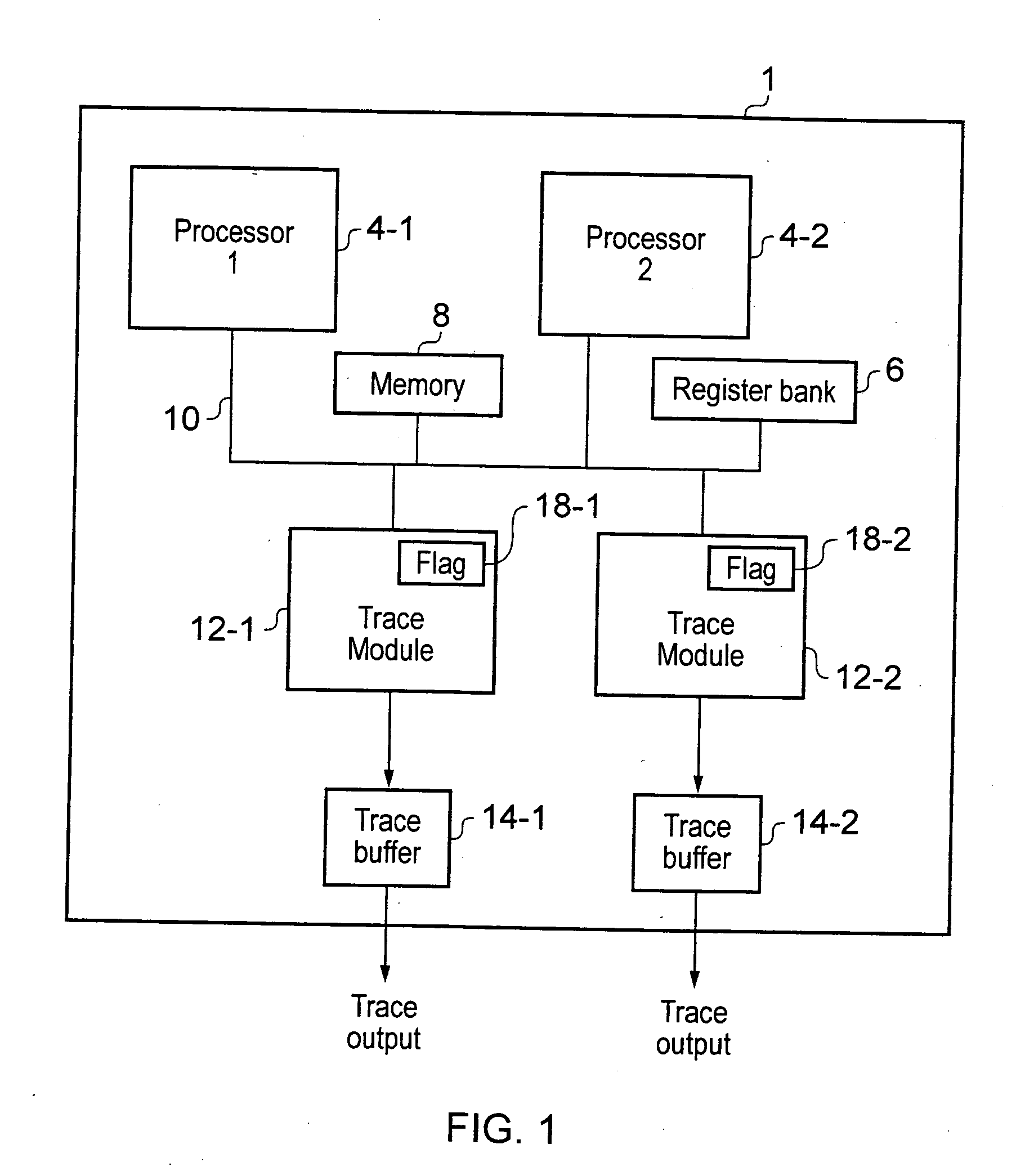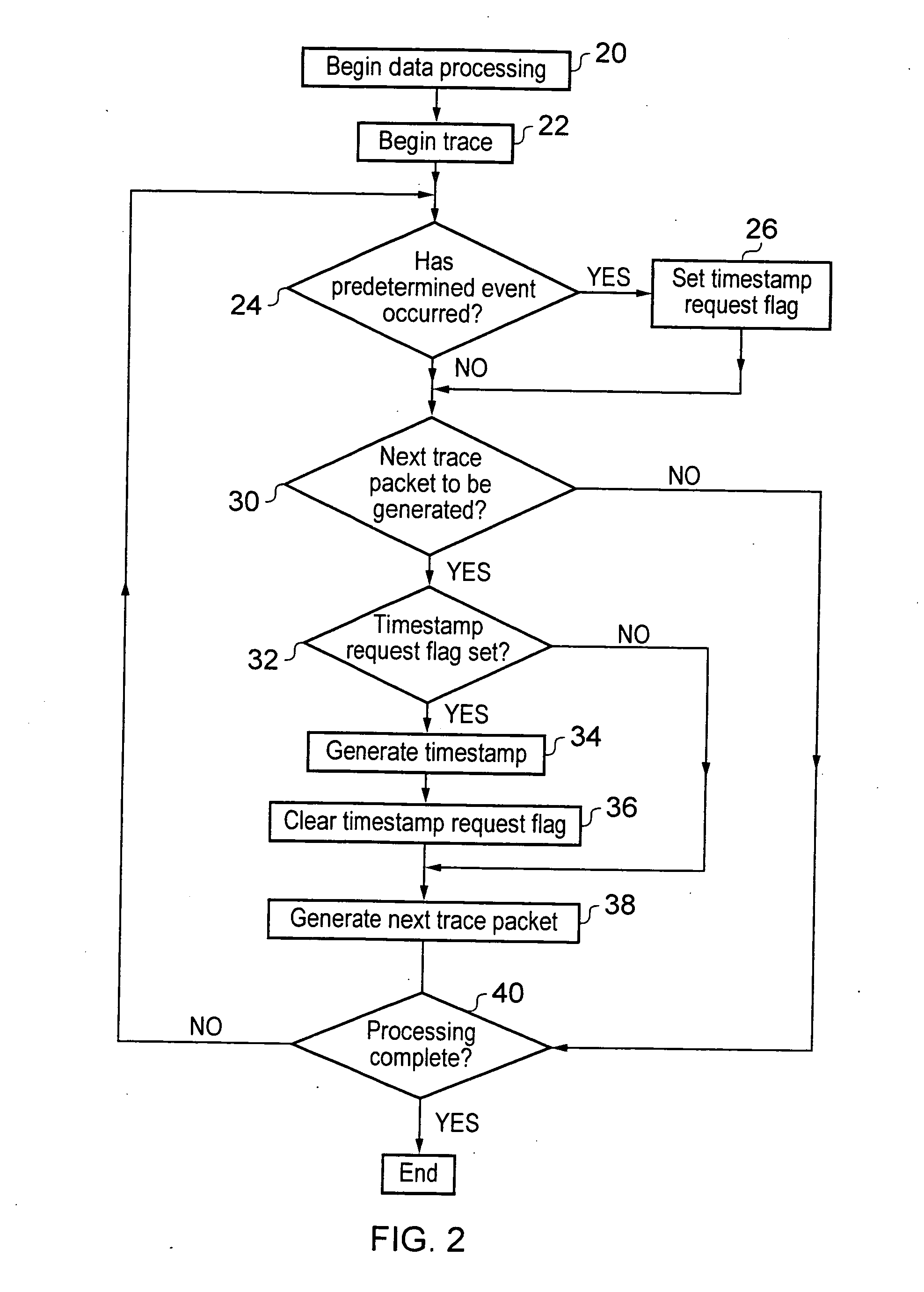Method, apparatus and trace module for generating timestamps
a timetamp and trace module technology, applied in the field of data processing, can solve the problems of increasing the amount of trace data in the trace stream, wasting trace bandwidth, and wasting trace buffer capacity and trace port bandwidth, and achieve the effect of saving trace bandwidth and fewer trace packets
- Summary
- Abstract
- Description
- Claims
- Application Information
AI Technical Summary
Benefits of technology
Problems solved by technology
Method used
Image
Examples
Embodiment Construction
[0063]FIG. 1 schematically illustrates a data processing apparatus 1. The data processing apparatus 1 comprises processing circuitry including at least one processor 4. In the example of FIG. 1, there are two processors: a first processor 4-1, and a second processor 4-2. In the following description, where a processor is referred to generally and it is not important which particular processor is being referred to, the reference numeral 4 will be used to represent the processor. It will be appreciated that the processing circuitry may also include other processing components such as hardware accelerators, co-processors or graphics processing units, for example.
[0064]The data processing apparatus 1 also comprises a register bank 6 for storing values used during processing and a memory 8 for storing data and instructions for use by the processor 4. The processor 4, the register bank 6 and the memory 8 are connected via a bus 10.
[0065]The processing apparatus 1 also comprises at least o...
PUM
 Login to View More
Login to View More Abstract
Description
Claims
Application Information
 Login to View More
Login to View More - R&D
- Intellectual Property
- Life Sciences
- Materials
- Tech Scout
- Unparalleled Data Quality
- Higher Quality Content
- 60% Fewer Hallucinations
Browse by: Latest US Patents, China's latest patents, Technical Efficacy Thesaurus, Application Domain, Technology Topic, Popular Technical Reports.
© 2025 PatSnap. All rights reserved.Legal|Privacy policy|Modern Slavery Act Transparency Statement|Sitemap|About US| Contact US: help@patsnap.com



